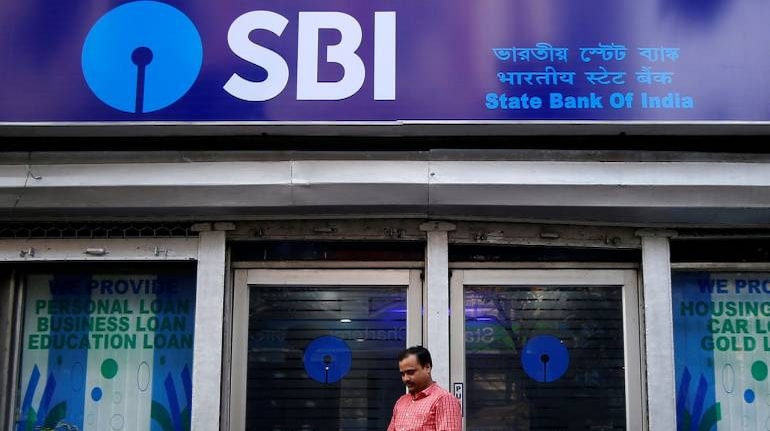



Banks generally don’t give any publicity for reductions in their deposit rates the way they do for lending rate cuts. The reason is logical: Every cut in deposit rates is bad news for the customer. For this reason, when the country’s largest lender State Bank of India (SBI) slashed its lending rates by a huge 75 basis points (one bps is one-hundredth of a percentage point), hours after the Reserve Bank of India (RBI) announced a significant 75 bps repo rate cut, it was widely publicised. People cheered the RBI and SBI hoping that their equated monthly instalment (EMI) burden will ease significantly. But not many would have expected that this will soon be followed up with a cut in deposit rates. That has happened now.
Effective April 15, the country’s largest lender SBI will offer an interest rate of 2.5 percent for savings deposit rates. This is the lowest-ever return Indian banks will offer to customers on their savings deposits. Till last month, SBI used to offer 3.25 percent on these accounts, which was cut to 3 percent on March 11. The explanation behind SBI’s savings rate cut is that the bank has adequate liquidity and hence it doesn’t need to incentivise further deposit inflows.
The RBI’s liquidity easing measures and nearly zero demand for fresh loans mean banks are abundant with liquidity. They do not need to chase low-cost deposits now as they used to do a while ago. But the bigger message is this: If banks are pushed to the corner to cut lending rates, they will make up for the losses by bringing down the deposit rates to protect their margins. Banks are always margin hungry. They raise money from depositors and borrow from the RBI's repo window. Any changes on one side will have to reflect on the other side.
To be sure, SBI has a good reason for lowering the savings rate. Ever since bank savings rate deregulation happened in 2011, savings rate among large Indian banks has remained unchanged at 4 percent. Till then the rate was administered at 3.5 percent for several years (the change before that was done in 2003). Though lending rate deregulation happened in India in the 1990s, savings rate continued to be an administered rate. When this rate was deregulated, the idea was to give an opportunity to the common savers to earn high returns as it was believed that competition would prompt banks to offer better savings rate. Both fixed deposit rates and lending rates have been tweaked several times but not savings rates. Certain smaller and medium-sized banks have offered higher rates, but the industry has largely agreed upon a 4 percent rate.
The 4 percent savings rate was first brought down by SBI in July, 2017, a few months after demonetisation. SBI cut the rate straight to 3.5 percent from 4 percent. There were three major reasons given. a) inflation falling and real returns improving b) demonetisation money flooding banks and C) likely downward bias on interest rates. These reasons were good enough for the bank to defend its move then. Also, it makes great economic sense for SBI to reduce the savings rate.
With savings rate at 2.75 percent, customers have no reason to park their money in plain savings accounts. What are the other options? Even with a recent reduction in small savings rates by 70 bps-120bps, some of the schemes still look attractive for them as this Moneycontrol story highlights . Fixed deposit rates aren’t competitive.
Also, reduced returns on savings deposits is one more reason why borrowers, who have enough cash flows to pay their EMIs, should not opt for the recent moratorium offer. It makes no sense to pay interest above 7.5 percent to banks and park money for 2.75 percent return. The simultaneous cut in SBI’s marginal cost of lending rates (MCLR) by 35 bps is sentimentally positive for borrowers but won’t be a decisive factor for a new home loan buyer to make his decision.
What next? SBI’s cut in savings rate will likely be followed up with a reduction in fixed deposit (FD) rates as well. SBI right now offers 5.7 percent to 1-2 years FDs. This will likely come down further. Most banks will take cues from SBI’s savings deposit rate cut soon and later do the same in FD rates. Those customers who have already locked in their money in FDs will not be affected.
“It is almost certain that term deposit rates will come down next. Banks will have to align their lending rate cuts with deposit rate reductions,” said a Mumbai-based banking analyst. Many banks had recently reduced their fixed deposit rates. These banks may further bring it down in the wake of the SBI rate action. That will be bad news for savers, especially senior citizens who typically prefer bank deposits over other riskier instruments.
Discover the latest Business News, Sensex, and Nifty updates. Obtain Personal Finance insights, tax queries, and expert opinions on Moneycontrol or download the Moneycontrol App to stay updated!
Find the best of Al News in one place, specially curated for you every weekend.
Stay on top of the latest tech trends and biggest startup news.